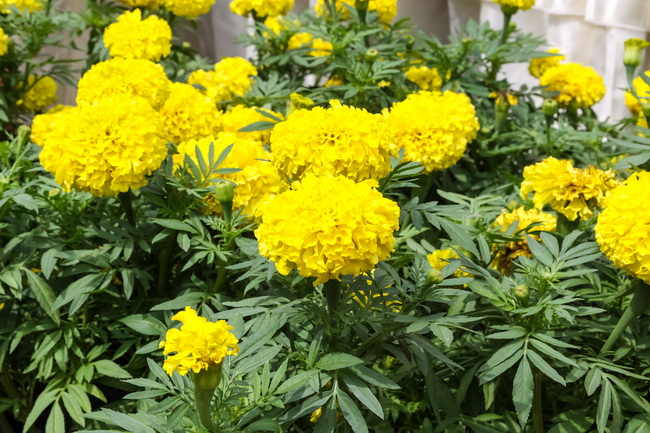- Make It Yourself Lavender Heart-Shaped Bath Bombs!
- 20 Things You Never Knew About “Down There”
- 12 Best Foods For Those Suffering From Arthritis Pain
- 12 Personal Hygiene Mistakes Almost Everyone Makes (Mom Never Told You About #4!)
- 15 Medicinal Plants And Herbs From The Cherokee People
- 12 Mind-Blowing Benefits Of Drinking Coconut Water During Pregnancy
- 12 Outstanding Winter Foods That Won’t Fatten You Up Like A Christmas Turkey
Grow Your Own Herbal Salve Garden with These 10 Plants

Photo credit: bigstock.com
When you or a family member have a minor problem that requires some simple first aid or other home remedy, you probably run right to your medicine chest. Did you know, however, that rather than filling it with over the counter chemicals and petroleum based products, you can have natural herbs that will do the same job cheaper and more effectively without risking your family’s health? It’s true! When you grow your own herbal salve garden, you can fill your first aid kit or medicine chest with natural tinctures and other remedies that will do the job for a fraction of the cost and without harmful chemicals.
You can grow many of these in pots if space is tight, or add beauty and color to your landscape at the same time with just a few square yards of garden space.
Keep reading for the top 10 herbs you can grow, harvest, and then use for your own medicine chest. To get you started, we have included a recipe for a comfrey salve that you can use for a variety of strains, sprains, and back pain.
1. Lavender
Not only will you be growing lavender for its healing properties, you will love the beautiful spiky purple flowers that fill your yard with their beautiful scent. This plant is also perfect for those of you who like to make homemade gifts of sachets or potpourri.
Lavender is terrific in salves to stop the pain from burns, insect bites, rashes, muscle aches, or any other type of skin ailment. Lavender is super easy to grow and, for those of you who live in mild climates, some say they can grow lavender all year around.
2. Rosemary
A beautiful bush that grows just about anywhere. It likes it’s soil a bit on the dry side so if you plant it in the ground, give it full sun and perhaps plant it in a mound or in a planter box so the majority of the roots don’t sit in water. It is very difficult to grow from seed or from a cutting, so buy a small plant from a local grower. If you live in a very cold climate, leave this plant in a pot so it can overwinter in your garage or inside the house.
Rosemary can be dried and used in your food, but for your medicine chest this blue flowering bush is simply anti-anything-you-can-imagine: antibacterial, anti-parasitic, anti-inflammatory, and anti-fungal. It can stop itching, improves circulation, relieves muscle pain, and is helpful with joint pain due to inflammatory conditions such as arthritis.
3. Marshmallow
Don’t expect to see those mini marshmallows pop out on this plant! It looks similar to hollyhocks and is a very pretty addition to your garden. Marshmallow is great for burns or other types of skin inflammation. Both the root and the leaves can be used to soften the skin, ease sunburns, and stop rashes.
SEE ALSO: Is Your Garden Hose Contaminating Your Food?
4. Chamomile
Almost everyone has heard of chamomile and it immediately brings to mind peacefulness and a sense of calm. Chamomile tea is great for frayed nerves or on those nights when sleep just seems to elude you. It’s also very healing for the skin and can help to soothe and heal eczema, windburn, and sunburn. Chamomile is so easy to grow, and it self-sows, so allow a few of the plants to go to seed and you will have more chamomile next year.
5. Calendula
Calendula is the plant you want to turn to when you have skin infections. With its antiseptic properties, calendula will speed the healing of infected cuts, wounds, burns, or dry, chapped skin. Calendula contains oleanolic acid which is what makes it such as great antibacterial herb. It also has anti-inflammatory compounds as well as powerful antioxidants that can help stop the damage that free radicals cause while the body is trying to heal. Calendula is easily grown from seed. Give it full sun and it will bloom all summer long, right up until the frost sets in, which means you can harvest its flowers for months!
Continue to Page 2
































